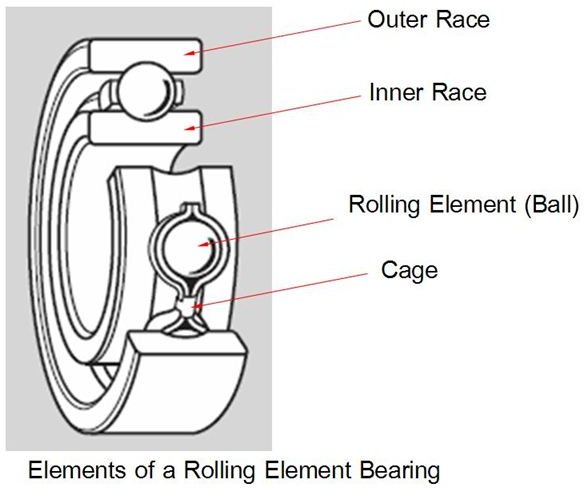Rolling Element Bearings or Anti-Friction Bearings
Man from his early days of invention has been keen on making things to work more smother so that the effort spend by him would be the least. This led to the invention of the rolling element bearings, which currently rule the world for their ease of availability, interchangeability and use.
Rolling element bearings are so called because of the elements that bear the load tend to roll around a raceway. To understand what these rolling elements are let us look into the cross-section of a bearing.
Constructional Elements of Rolling Element Bearings:
· Outer Race – The outer race in majority of cases is a stationary member amply connected to the casing providing support and stability to the bearing.
· Inner Race – The inner race in majority cases in the rotating member which is mounted on the shaft.
· Rolling Element (Ball or Roller) – The load carrying member that connects the inner race and the outer race during rolling.
· Cage – The cage is an important member that holds the rollers in place preventing them from bumping into or colliding against each other during running.
Having seen the constructional aspects, a general thought occurs in the mind that these bearings seem to be quite complex to understand. Yes, these bearings are quite difficult to understand the working nature and capabilities. These bearings undergo consistent changes due to the huge amount of research and development involved in their design and manufacture.
But it is better we know their advantages over other type of bearings.
· The very other name of the rolling element bearings i.e. “Anti-Friction Bearings” gives the answer; these bearings tend to have lesser friction during starting and as well as running.
· They require lesser space when compared to hydrodynamic or hydrostatic bearings.
· A single type of bearing has the capability to handle or withstand both radial and axial loads; and yet there are specific bearings that can carry only radial or axial force.
· The lubrication of these bearings can be done quite easily compared to hydrostatic and hydrodynamic bearings, but cannot be run devoid of lubrication. The also have the advantage of holding the lubrication for their life within themselves as in “sealed bearings”.
Apart from looking at the advantages these bearings do posses some disadvantages
· These bearings require high precision everywhere i.e. from the places they get mounted to the alignment of the shaft that runs in the bearing. This leads to higher machining costs.
· These bearings even though properly lubricated have a high chance of failing due to fatigue.
Let us look into the classification of the bearings in the forthcoming article.
